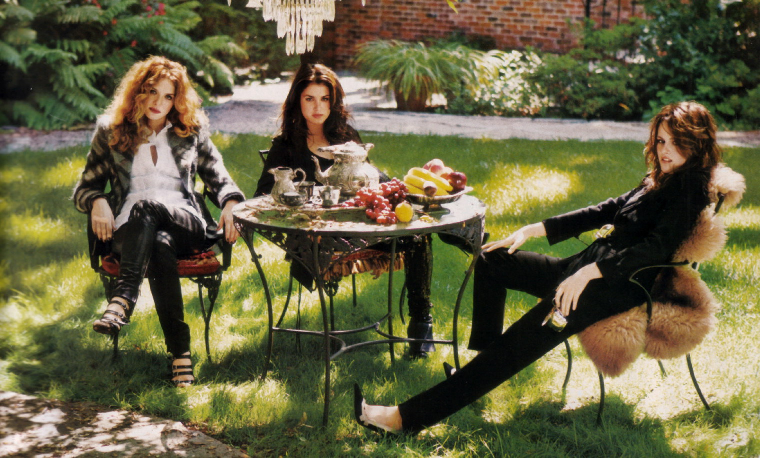 I'm sure most of the older Twilighters have heard about imprinting occurring in nature and, like myself, decided that was probably the concept that inspired Stephenie's version. It would make sense, after all. The Quileute shapeshifters turn into wolves, which are a form of animal, and it's pretty safe to say that, while they retain their humanity, a bit of animalistic behavior edges its way into their personalities.
I'm sure most of the older Twilighters have heard about imprinting occurring in nature and, like myself, decided that was probably the concept that inspired Stephenie's version. It would make sense, after all. The Quileute shapeshifters turn into wolves, which are a form of animal, and it's pretty safe to say that, while they retain their humanity, a bit of animalistic behavior edges its way into their personalities.However, that assumption runs into some problems. You see, Stephenie Meyer's interpretation of imprinting doesn't exactly correlate with nature's interpretation.
I suppose I should define Stephenie's version first. Wikipedia was kind enough to put it into words for me:
"In the Twilight Series, "imprinting" is the phenomenon where a shape-shifter, after initially transforming, will be unconsciously drawn toward, and then unconditionally attached to a member of the opposite gender, although it is not completely sexual."
That is definitely spot on. Now, it's 9:30 at night and I'm a little sleepy, so I half-heartedly searched for the passage where imprinting is explained. Since I haven't found it, I'll just roughly explain it myself.
When Jacob's imprinting was described, it was said that every cable linking him to everyone else snapped and bonded to Renesmee instead, thicker than wire cables. It tied him to that one person. In general, imprinting connects the imprinter and imprintee. It doesn't have to be sexual, as we saw with both Quil and Jacob. Their partners are very young, and they could never even think of them romantically. They want to be there for them. They want to be whatever they need -- brothers, friends, confidants, mentors, protectors. Now, when Claire and Renesmee grow older, Quil and Jacob may have a change of heart. Romantic love may blossom. However, should either or both girls ever decide they want to venture down a different path, the boys will let them do so. The only thing imprinters want is what's best for their imprintees, and what the imprintees truly desire.
If we tried to apply this to our world's wildlife, most scientists would cry anthropomorphism. (I really hate that term. Science doesn't even have a solid foundation for animal behavior study, so to call anthropomorphism is to do so without basis.) In a way, I agree that this is probably not what imprinting means to real life's animals. Some animals are monogamous; others change partners yearly. So to clarify what science means by imprinting, I'll quote Wikipedia again:
"Sexual imprinting is the process by which a young animal learns the characteristics of a desirable mate. For example, male zebra finches appear to prefer mates with the appearance of the female bird that rears them, rather than mates of their own type (Immelmann, 1972). The famous psychologist John Money called it the lovemap."
Even further, Encyclopedia Brittanica says:
"The duration and time of onset of the sensitive period depend on the species and on the type of behaviour involved. Some animals imprinted to animals of another species will mate with members of their own species but, if given a choice, will prefer the animal to which they have been imprinted. Many species refuse social contact with any animal except the one to which they are imprinted. Male golden pheasants (Chrysolophus pictus) imprinted to humans will court females of their own species but immediately transfer this behaviour to a human, should one appear."
In a way that kind of sounds like Stephenie's version. The animal prefers the imprintee to everyone else. Still, it's not exact, and it got me thinking if there was another definition that Stephenie had used. So I went to Dictionary.com and found this:
"a mark made by pressure; a mark or figure impressed or printed on something."
I felt like both an idiot a genius when I read this. This is the default definition of imprint. I should have realized. To me, that sounds way more like Stephenie's version. Essentially, when a shapeshifter imprints, both their soul and the imprintee's have been impressed upon. They each mark each other's souls; that's what draws themselves to each other. IT MAKES PERFECT SENSE!
Since finding this this afternoon, I've decided that a mark made by pressure is probably what Stephenie meant. It's entirely possible that she combined both ideas or that the psychological behavior of animals inspired her, but... Well, until she addresses this question, I guess we won't know!
What is your theory?


I think it is not the werewolf but rather the other person that ultimately decides when imprinting occurs -- it is really their choice , not the wolf's.
ReplyDeleteThat is why the wolf imprints on kim ( kim has a crush on him already) and why jacob never imprints on bella. Jacob may want bella but bella never truely want jacob so he never imprints on her. Resnesmee however, chooses Jacob so he imprints.